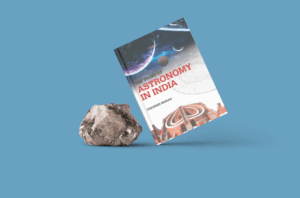Urdu, spoken by the South Asian Muslims with diverse regional identities as well as the diaspora communities from South Asia spread over Europe, America, Australia, and parts of Africa and West Asia, is an Islamic language comparable with Arabic, Persian and Turkish. Apart from Arabic and Persian, Urdu has been the main language used by the Muslims for literary pursuits in the Indian subcontinent from the late Mughal period of Indian history.
One area of the diverse contributions made by the South Asian Muslim scholars is the Quran translation and interpretation in Urdu. Today, Urdu boasts of such illustrious and diverse interpreters and commentators of the Quran as Shah Abdul Qadir, Sayyid Ahmad Khan, Maulana Ashraf Ali Thanwi, Maulana Ahmad Raza Khan, Maulana Abul Kalam Azad, Maulana Abul Ala Maududi, Maulana Abdul Majid Daryabadi and Maulana Amin
Ahsan Islahi.
This edited volume of fourteen insightful chapters and an extensive bibliography brings into light the robust tradition of tafsir in Urdu, which is next only to Arabic and Persian in both quality and quantity. Scores of tafasir in Urdu written in the last two hundred years, including the influential ones by Ashraf Ali Thanwi, Abul Kalam Azad, Abdul Majid Daryabadi, and Abul Ala Mawdudi have addressed, in their own varied ways, the challenges posed by Westernization, modernity and pluralism. This, in turn, underscores the timeless, universal message of the Quran which is valid for all time and place.
Here is an excerpt from the book:
Muḍih al-Qur’an
by Shah Abdul Qadir Dehlvi
Shah Abdul Qadir was least interested in authoring and compiling the books. He was very much fond of reciting the Qur’an. He stayed for around forty years in the Akbarabadi mosque. He had no work to do except recitation of the Qur’an. Meanwhile, he translated the Qur’an into Urdu language with brief footnotes in the long time of twelve years. In the “Foreword,” Shah Abdul Qadir introduces his translation of the Qur’an thus:
The language of the Qur’an is Arabic and an Indian cannot comprehend it as such. Therefore, as my father Shah Waliullah has translated the Qur’an into Persian, I thought to render it into comprehensible, simple and easy Indian language. By the Grace of Almighty Allah, I completed it in 1205H. Some points should be kept in mind before reading this translation: The first one is that it is not a word to word translation because Urdu and Arabic are two different languages in their rules of grammar and usage. The second point is that the language of this translation is not rhetorical but simple and commonly used so that everyone can comprehend it. The title of the book is Mudih al-Qur’an. This title is introductory and the year of completion is 1205H.
Editions and Translations
Shah Abdul Qadir’s translation has gone through many editions. It is much discussed by Bloom Hart in the indexes of British Museum and India Office, London (under the category of published books). For the very first time, Syed Abdullah bin Syed Bahadur Ali published it from Ahmadi Publication House, Kolkata in 1829,12 but this edition needed minor corrections in translation and footnotes. The second edition appeared in 1837 from Kolkata. It consisted of two volumes. The first volume comprised the translation of the Qur’an from beginning to Surah al-Kahf and the second volume from Surah Maryam to the last Surah of the Qur’an. In 1876, another edition appeared in Roman calligraphy with preface by British clergyman P.T. Hughes and editing by clergyman E.M. Wherry. It was published for the missionaries. Many editions of Mudih al-Qur’an were published in the subcontinent. Akhlaq Hussain Qasmi discusses eighteen editions and their details. Taj Company is a well-known publication house in Delhi from which many editions of this translation appeared. It was translated into Pashtun by Muhammad Fathullah Qandhari, Vice Mufti of Bhopal and published in 1861 from Sikandari Publication House, Bhopal. According to an index of India Office, Shah Abdul Qadir’s translation has been rendered into Tamil, Punjabi, Hindi and Afghani languages. The same index describes a book by a British author which consisted of an index of Abdul Qadir’s translation besides mentioning its merits. It was published from Ludhiana in 1899.
Significance of Mudih al-Qur’an in the Sight of Eminent Scholars
Before Shah Abdul Qadir, the Qur’an was translated many times into Urdu language but those translations either could not be published or did not get recognition and became confined to libraries. However, Abdul Qadir’s translation was respectfully recognised and the scholars of the Qur’an highly valued it. It was appreciated by many giants of knowledge, eminent scholars and translators of the Qur’an, and renowned historians and biographers. Some scholarly remarks about his translation are mentioned below:
Mahmood Hasan discusses the beauties of Mudih al-Qur’an in the foreword to his own translation of the Qur’an. He states: “Shah’s translation is distinct and beneficial among all translations and it deserves to be highly praised and appreciated. It is the brilliance of Shah that he chooses and uses the most suitable words. It seems that he has a tremendous mastery over vocabulary of Urdu language and he always selects most fitted words in translation.”
Prominent Urdu scholar Molvi Abdul Haque writes:
Shah Abdul Qadir’s translation became well known among scholars and is appreciated till date. It is in pure Urdu language. Its most striking feature is its vocabulary which is most fitted and unparalleled. It is not chained in word to word translation but is an amalgamation of actual interpretation and beauty of words. Another major feature is its conciseness, terseness and brevity. He always uses brief expressions with actual meanings.




